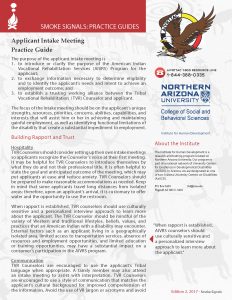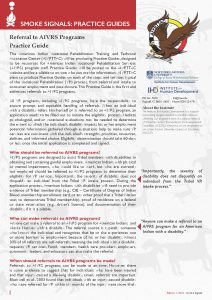
-
Moccasin Telegraph: Newsletters
-
Drum Beats: Fact Sheets
-
Smoke Signals: Practice Guides
-
Other Publications
-
AIVRTTAC Reports
Moccasin Telegraph: Newsletters
- Video Newsletter
- Recent Moccasin Telegraph Newsletters
- Past Moccasin Telegraph Newsletters
Moccasin Telegraph May 2021 – Issue 10
Moccasin Telegraph Newsletter November 2020 – Issue 9
Moccasin Telegraph Newsletter July 2020 – Issue 8
Moccasin Telegraph Newsletter November 2019 – Issue 7
Moccasin Telegraph Newsletter May 2019 – Issue 6
Moccasin Telegraph Newsletter October 2018 – Issue 5
Moccasin Telegraph Newsletter June 2018 – Issue 4
Moccasin Telegraph Newsletter June 2017 – Issue 3
Moccasin Telegraph Newsletter November 2016 – Issue 2
Moccasin Telegraph Newsletter March 2016 Newsletter – Issue 1
Drum Beats: Fact Sheets
One Way of Knowing Is Not Always the Best Way: Introduction to Evidence Based Practice for AIVRS Programs
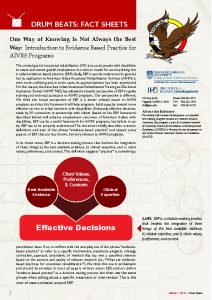
The central goal of vocational rehabilitation (VR) is to assist people with disabilities to attain and sustain gainful employment. A common model for accomplishing this is called evidence-based practice (EBP). Sadly, EBP is poorly understood in general, but its application to American Indian Vocational Rehabilitation Services (AIVRS) is even more confusing and, in some cases, its appropriateness has been questioned. For this reason, the American Indian Vocational Rehabilitation Training and Technical Assistance Center (AIVRTTAC) has adopted a broader perspective of EBP to guide training and technical assistance to AIVRS programs. Our perspective is different. We think this broad perspective of EBP is a better cultural match to AIVRS programs and that this framework will help programs build capacity toward more effective service to tribal members with disabilities. Ultimately, effective decisions made by VR counselors in partnership with clients (based on the EBP framework described below) will enhance employment outcomes of American Indians with disabilities. EBP can be a useful framework for AIVRS programs, but before it can be, EBP has to be properly understood. This document briefly describes common definitions and uses of the phrase “evidence-based practice” and reveals some aspects of EBP that are less known, but very relevant to AIVRS programs.
![]()
American Indian Vocational Rehabilitation Services Programs
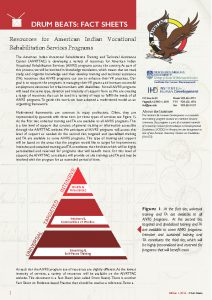
Resources for American Indian Vocational Rehabilitation Services Programs
The American Indian Vocational Rehabilitation Training and Technical Assistance Center (AIVRTTAC) is developing a variety of resources for American Indian Vocational Rehabilitation Services (AIVRS) programs across the country. As part of this process, we will be involved in knowledge translation, which means that we read, study, and organize knowledge and then develop training and technical assistance (TA) resources that AIVRS programs can use to enhance their VR practices. Our goal is to support the programs in managing their VR grants and increase successful employment outcomes for tribal members with disabilities. Not all AIVRS programs will need the same type, duration and intensity of support from us. We are creating a range of resources that can be used in a variety of ways to fulfill the needs of all AIVRS programs. To guide this work, we have adopted a multi-tiered model as an organizing framework.
![]()
Characteristics of Effective Vocational Rehabilitation Programs
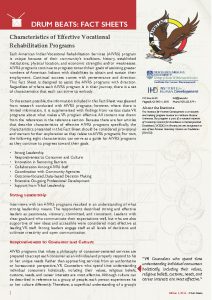
Characteristics of Effective Vocational Rehabilitation Programs
Each American Indian Vocational Rehabilitation Services (AIVRS) program is unique because of their community’s traditions, history, established institutions, physical location, and economic strengths and/or weaknesses. AIVRS programs continue to progress toward their goals of assisting greater numbers of American Indians with disabilities to obtain and sustain their employment. Continual success comes with perseverance and direction. This Fact Sheet is designed to assist the AIVRS programs with direction. Regardless of where each AIVRS program is in their journey, there is a set of characteristics that each can strive to embody.
Smoke Signals: Practice
Guides
VR Process: Employment, Case Closure, and Post-
Employment Services
S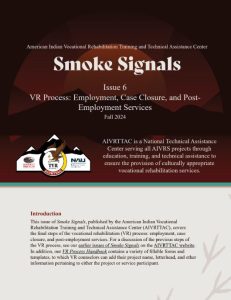 moke Signals Issue 6: VR Process: Employment, Case Closure, and Post-
moke Signals Issue 6: VR Process: Employment, Case Closure, and Post-
Employment Services
This issue of Smoke Signals the final steps of the vocational rehabilitation (VR) process: employment, case
closure, and post-employment services.
Smoke Signals: Practice
Guides
VR Process: IPE Development and Provision of Services
S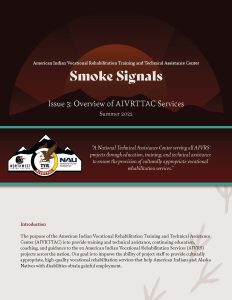 moke Signals Issue 5: VR Process: IPE Development and Provision of Services
moke Signals Issue 5: VR Process: IPE Development and Provision of Services
This issue of Smoke Signals covers the third step of tribal vocational rehabilitation
(TVR) process: eligibility determination.
VR Process: Eligibility
S moke Signals Issue 4: VR Process: Eligibility
moke Signals Issue 4: VR Process: Eligibility
This Smoke Signals Practice guide provides an overview of Step 3 of the Vocational Rehabilitation Process: Eligibility. It is intended as a reference for all AIVRS project staff as well as anyone interested in the VR process.
Overview of AIVRTTAC Services
S moke Signals Issue 3: Overview of AIVRTTAC Services
moke Signals Issue 3: Overview of AIVRTTAC Services
This Smoke Signals Practice Guide provides a description of the services and resources offered by AIVRTTAC during its second funding period, as well as information on how to access those services. It is intended as a reference for all AIVRS project staff as well as anyone interested in the history and activities of AIVRTTAC.
![]()
Applicant Intake Meeting Practice Guide
Smoke Signals Issue 2: Applicant Intake Meeting Practice Guide
The purpose of the applicant intake meeting is:
1. to introduce or clarify the purpose of the American Indian Vocational Rehabilitation Services (AIVRS) Program for the applicant; 2. to exchange information necessary to determine eligibility and to identify the applicant’s needs and intent to achieve an employment outcome; and 3. to establish a trusting working alliance between the Tribal Vocational Rehabilitation (TVR) Counselor and applicant.
![]()
Referral to AIVRS Services Practice Guide
Smoke Signals Issue 1: Referral to AIVRS Programs Practice Guide
The American Indian Vocational Rehabilitation Training and Technical Assistance Center (AIVRTTAC) will be producing Practice Guides, designed to be resources for American Indian Vocational Rehabilitation Services (AIVRS) program staff. Practice Guides will be posted to the AIVRTTAC website and be available to anyone who can use the information. AIVRTTAC plans to produce Practice Guides on each of the steps and services typical of the Vocational Rehabilitation (VR) process, from referral and intake to consumer employment and case closure. This Practice Guide is the first and addresses referrals to AIVRS programs.
Other Publications
AIVRTTAC: Supporting American Indian Vocational Rehabilitation
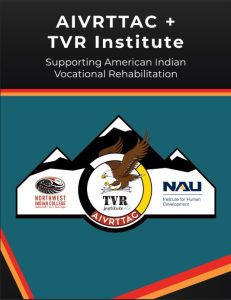
AIVRTTAC: Supporting American Indian Vocational Rehabilitation
This booklet was created as a part of AIVRTTAC and RSA’s participation in Native American heritage month. The booklet gives an overview of AIVRTTAC and AIVRS projects and promotes conversation about the history of American Indian VR Services. This booklet includes a brief historical recap of AIVRS Projects, and how they came to be. This booklet outlines AIVRTTAC’s Services and some statistical information that highlight AIVRTTAC![]()
Article: Resources for American Indian Vocational Rehabilitation Services Programs
Read the article: Resources for American Indian Vocational Rehabilitation Services Programs
Background
Since their inception, State Vocational Rehabilitation (SVR) and American Indian Vocational Rehabilitation Services (AIVRS) have played pivotal roles in assisting millions of individuals with disabilities in securing and sustaining competitive integrated employment.
Objective
This article aims to inform readers about the historical context and key issues concerning AIVRS while proposing strategies for enhanced collaboration between AIVRS and SVR programs in joint service provision.
